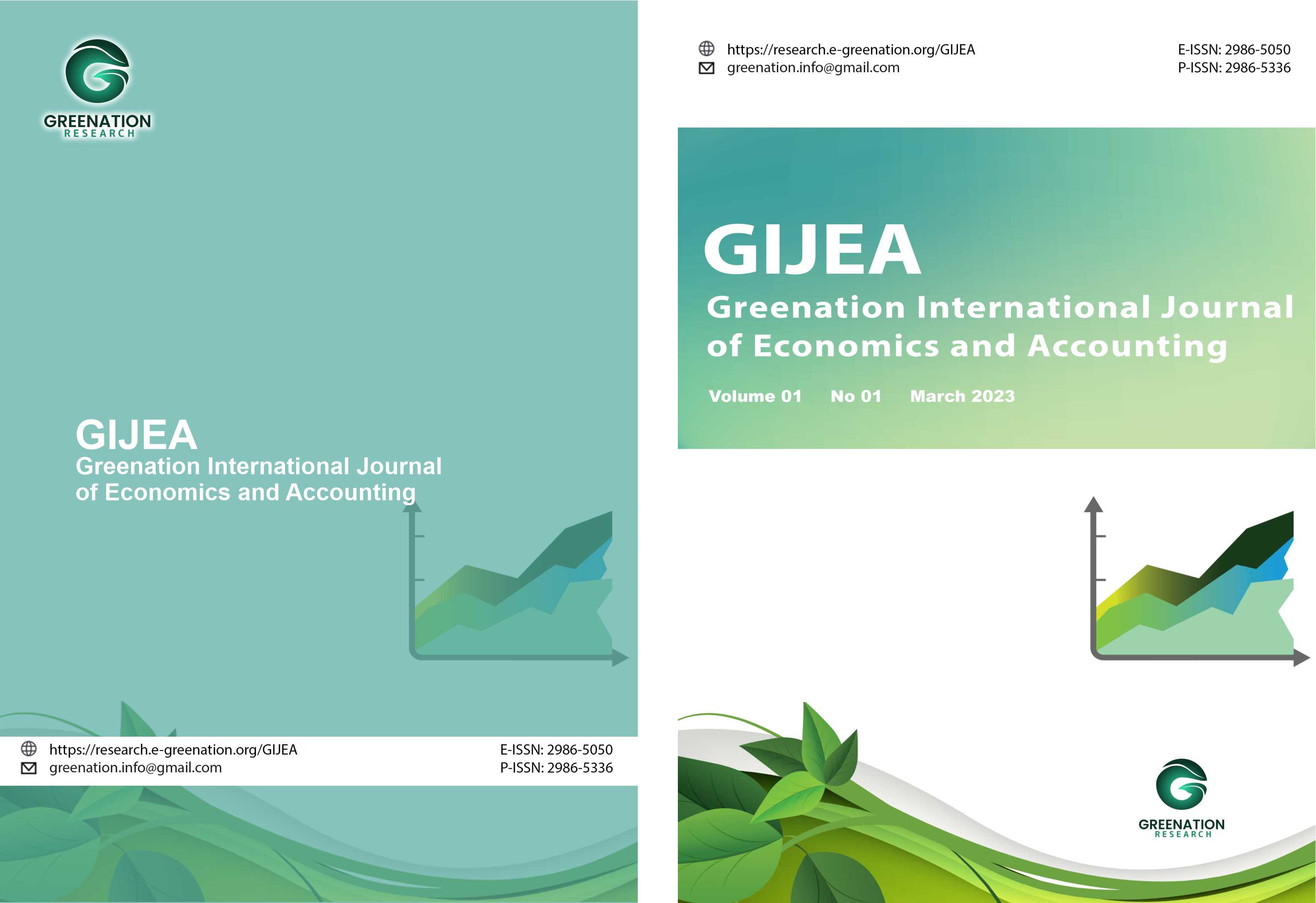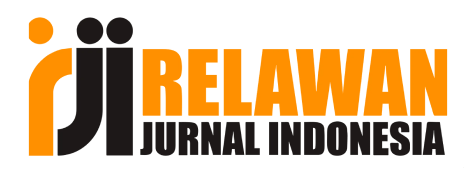An Analysis of PT Bank CDE's Capacity to Implement the Climate Risk and Management Scenario (CRMS)
DOI:
https://doi.org/10.38035/gijea.v3i1.375Keywords:
Banking, Climate Risk, Climate Change, Management Scenario, Risk ManagementAbstract
Climate change has become a global issue that significantly impacts the banking sector, particularly in the management of credit portfolios that are vulnerable to both physical and transition risks. These risks may affect asset quality and the overall financial stability of banks. Therefore, it is essential for banking institutions to demonstrate the capacity in managing such risks through scenario based approaches, such as the Climate Risk Management Scenario (CRMS). This study aims to analyze the capacity of PT Bank CDE in implementing CRMS as part of its climate risk management strategy for its credit portfolio. A qualitative approach with a case study strategy was employed. Data collection was conducted through semi structured interviews as the primary data source and document analysis of regulatory guidelines and the company’s sustainability reports as secondary data. The findings indicate that PT Bank CDE is at a fundamental stage in implementing CRMS. This organizational capacity is reflected in the establishment of an Environmental, Social, and Governance (ESG) Management unit, cross functional collaboration (involving ESG Management, IT, Business, and the ESG Subcommittee), and the adoption of the Three Lines Model principle, although it has not yet been formally institutionalized. These findings suggest an initial commitment to integrating climate risk into the company’s risk governance system.
References
Ainurrohmah, S., & Sudarti, D. S. (2022). Analisis Perubahan Iklim dan Global Warming yang Terjadi sebagai Fase Kritis. In Jurnal Pendidikan Fisika dan Fisika Terapan (Vol. 8, Issue 1).
Anderson, D. J., & Eubanks, G. (2015). Leveraging COSO across the Three Lines of Defense. COSO
Atlason, R. S., Gunnarsson, G., Pálsson, K., & Sigurjonsson, T. O. (2023). Accounting for time when estimating financed greenhouse gas emissions from investment and lending portfolios. Current Research in Environmental Sustainability, https://doi.org/10.1016/j.crsust.2023.100232
Auffhammer, M. (2018). Quantifying economic damages from climate change. Journal of Economic Perspectives, 32(4), 33–52. https://doi.org/10.1257/jep.32.4.33
Adeniran, I. A., Abhulimen, A. O., Obiki-Osafiele, A. N., Osundare, O. S., Agu, E. E, & Efunniyi, C. P. (2024). Strategic risk management in financial institutions: Ensuring robust regulatory compliance. Finance & Accounting Research Journal, 6(8), 1582–1596. https://doi.org/10.51594/farj.v6i8.1508
Battiston, S., Dafermos, Y., & Monasterolo, I. (2021). Climate risks and financial stability. In Journal of Financial temStability (Vol. 54). Elsevier B.V. https://doi.org/10.1016/j.jfs.2021.100867
Bressan, G. M., & Romagnoli, S. (2021). Climate risks and weather derivatives: A copula-based pricing model. Journal of Financial Stability, https://doi.org/10.1016/j.jfs.2021.100877
Cooper, D. & Schindler, P. (2014). Business Research Methods (12ed). New York: McGraw Hill/Irwin
Climate Risk Management & Scenario Analysis Perbankan. Departemen Pengaturan dan Pengembangan Perbankan Otoritas Jasa Keuangan. (2024). Buku 1 – Panduan Umum.
Climate Risk Management & Scenario Analysis Perbankan. Departemen Pengaturan dan Pengembangan Perbankan Otoritas Jasa Keuangan. (2024). Buku 2 – Panduan Teknis.
CRO Forum (2019). The heat is on Insurability and Resilience in a Changing Climate Emerging Risk Initiative-Position Paper. (n.d.).
Cucinelli, D., Nieri, L., Piserà, S. (2024). Climate and Environment Risks and Opportunities in the Banking Industry: The Role of Risk Management. International Journal of Finance & Economics. https://doi.org/10.1002/ijfe.3083
Dunz, N., Naqvi, A., & Monasterolo, I. (2021). Climate sentiments, transition risk, and financial stability in a stock-flow consistent model. Journal of Financial Stability, https://doi.org/10.1016/j.jfs.2021.100872
Ellet, W. (2018). The Case Study Handbook. Boston: Harvard Business Review Press. Enhanced Nationally Determined Contribution Republic Of Indonesia. 2022. (n.d.).
Erhemjamts, O., Huang, K., & Tehranian, H. (2024). Climate risk, ESG Perfomance, and ESG sentiment in US commercial banks. In Global Finance Journal (Vol. 59). Elsevier B.V. https://doi.org/10.1016/j.gfj.2023.100924
Gernowo, R., & Adi dan Zaenal Arifin, K. (2012). Studi Awal Dampak Perubahan Iklim Berbasis Analisis Variabilitas CO? dan Curah Hujan (Studi Kasus; Semarang Jawa Tengah) (Vol. 15, Issue 4). http://www.ngdc.noaa.gov
Greuning, H.V., Bratanovic, S.B. (2009). Analyzing Banking Risk A Framework for AssessingCorporate Governance and Risk Management 3rd Edition. Washinton D.C.: The World Bank
Gürdür, D., El-Khoury, J., Törngren, M.. (2019). Digitalizing Swedish industry: What is next? Data analytics readiness assessment of Swedish industry, according to survey results (Vol. 105). Elsevier B.V. https://doi.org/10.1016/j.compind.2018.12.011
Hartono, D. (2023). Jurnal Mirai Management Perubahan Iklim Dan Dampaknya Pada Indonesia. Jurnal Mirai Management, 8(2), 170–183.
Herlianto, A., Miftah, M., Agustina. (2023). Panduan Climate Risk Stress Testing Perbankan 2023. Otoritas Jasa Keuangan Volume 1.0
Indonesia Risk Management Professional Association. (2024). Mengintegrasikan Risiko Iklim dalam Framework Basel. Diakses dari https://irmapa.org/mengintegrasikan-risiko- iklim-dalam-framework-basel/
Kumarasiri dan Lodhia. (2020). The Australian Carbon Tax: Corporate Perceptions, responses, and motivations. Meditary Accountancy Research, 28(32020), 515-542. https://doi.org/10.1108/MEDAR-10-2019-0590
Laporan Surveillance Perbankan Indonesia (LSPI) TWI 2024. Departemen Perizinan dan Manajemen Krisi Perbankan OJK.
Legionosuko, T., Madjid, M. A., Asmoro, N., & Samudro, E. G. (2019). Posisi dan Strategi Indonesia dalam Menghadapi Perubahan Iklim guna Mendukung Ketahanan Nasional. Jurnal Ketahanan Nasional, 25(3), 295. https://doi.org/10.22146/jkn.50907
Miles, M.B., & Huberman, A. M. (2014). Qualitative Data Analysis Third Edition. United States of America: Sage Publication, Inc
Nurlatifah, A., Hatmaja, R. B., & Rakhman, A. A. (2023). Analisis Potensi Kejadian Curah Hujan Ekstrem di Masa Mendatang Sebagai Dampak dari Perubahan Iklim di Pulau Jawa Berbasis Model Iklim Regional CCAM. Jurnal Ilmu Lingkungan, 21(4), 980–986. https://doi.org/10.14710/jil.21.4.980-986
PCFA. (2022). Review accounting and reporting principles and rules Review and apply accounting methodologies for each asset class Report emissions Table of contents. In Financed Emissions-Second Edition.
Puspitasari, I., & Faturohman, T. (n.d.). Climate Change as a Business Risk: An Indonesian Banking Industry Perspective. In International Journal Of Humanities Education And Social Sciences (IJHESS) E-ISSN (Vol. 4, Issue 3). https://ijhess.com/index.php/ijhess/
Roncoroni, A., Battiston, S., Escobar-Farfán, L. O. L., & Martinez-Jaramillo, S. (2021). Climate risk and financial stability in the network of banks and investment funds. Journal of Financial Stability, 54. https://doi.org/10.1016/j.jfs.2021.100870
Saunders, M.N.K., Lewis, P., & Thornhill, A.(2023). Researchh Methods for Business Students (9ed). United Kingdom: Pearson
Scott, A. O., Amajuoyi, P., & Adeusi, K. (2024). Advanced risk management solutions for mitigating credit risk in financial operations. Magna Scientia Advanced Research and Reviews, 12(1), 212–223. https://doi.org/10.30574/msarr.2024.11.1.0085
Task Force on Climate-related Financial Disclosures. 2017. Final Report Recommendations of the Task Force on Climate-related Financial Disclosures. https://www.fsb-tcfd.org/publications/final-report
Trewartha, Glenn T., & Horn, Lyle H. 2001. Pengantar Iklim. Yogyakarta: Gadjah Mada University Press
Smith, J.A. (2009). Psikologi Kualitatif Panduan Praktis Metode Riset. Yogyakarta: Pustaka Belajar.
Weber, O. (2024). Climate stress testing in the financial industry. In Current Opinion in Environmental Sustainability (Vol. 66). Elsevier B.V. https://doi.org/10.1016/j.cosust.2023.101401
Working Paper Series. European Central Bank. (2024). Climate Risk, Bank Lending and Monetary Policy. https://papers.ssrn.com/sol3/papers.cfm?abstract_id=4918451#
Wredaningrum, I., Sudibyakto. (2014). Analisis Perubahan Zona Agroklimat Daerah Istimewa Yogyakarta Ditinjau Dari Klasifikasi Iklim Menurut Oldeman. http://site.ebrary.com/id/10267565?ppg=17
Yin, R.K. (2014). Case Study Research Desig and Methods (5th ed., 282p.). Thousand Oaks, CA: Sage. https://doi.org/10.3138/cjpe.30.01.108
Downloads
Published
How to Cite
Issue
Section
License
Copyright (c) 2025 Inggar Rayi Agatha, Aria Farah Mita

This work is licensed under a Creative Commons Attribution 4.0 International License.
Copyright :
Authors who publish their manuscripts in this journal agree to the following conditions:
- Copyright in each article belongs to the author.
- The author acknowledges that the GIJEA has the right to be the first to publish under a Creative Commons Attribution 4.0 International license (Attribution 4.0 International CC BY 4.0).
- Authors can submit articles separately, arrange the non-exclusive distribution of manuscripts that have been published in this journal to other versions (for example, sent to the author's institutional repository, publication in a book, etc.), by acknowledging that the manuscript has been published for the first time at GIJEA.

























